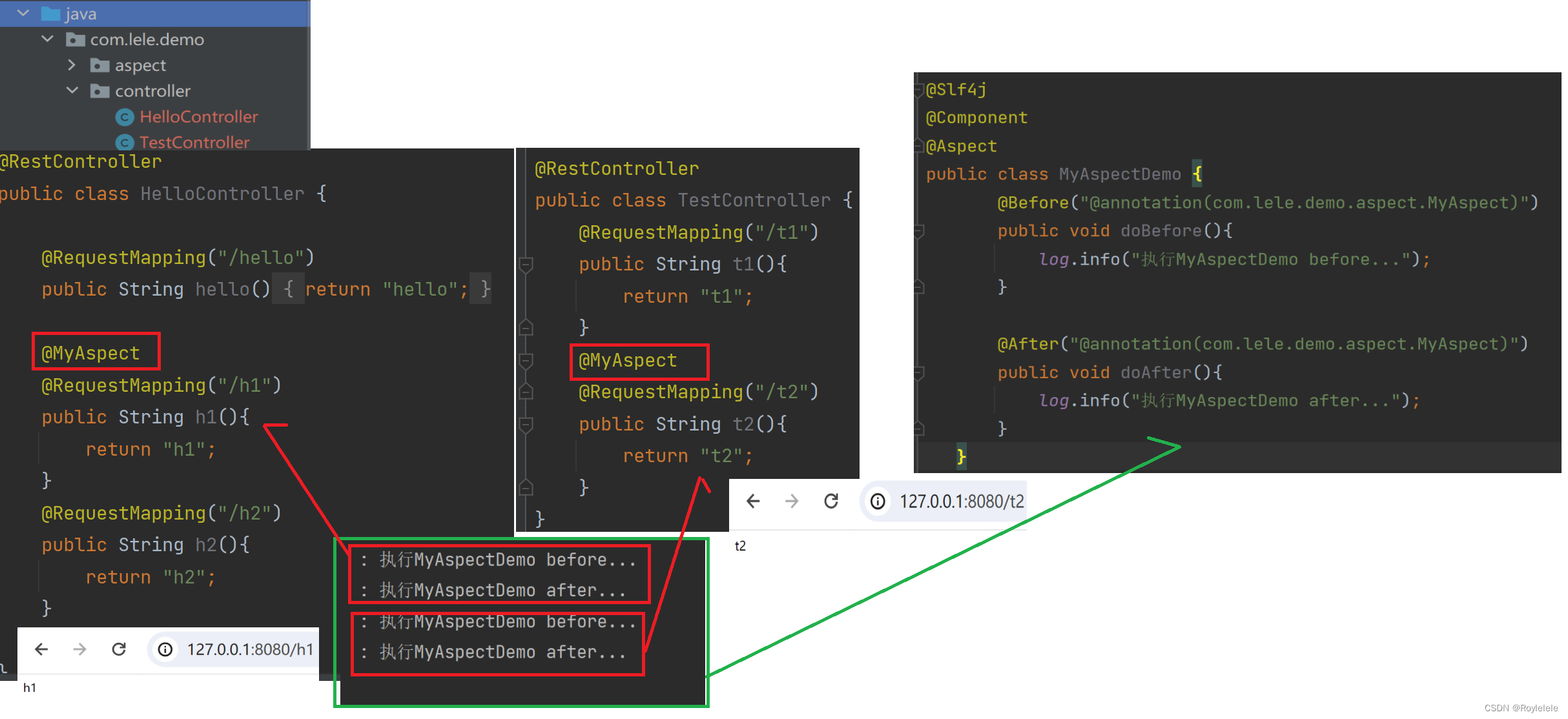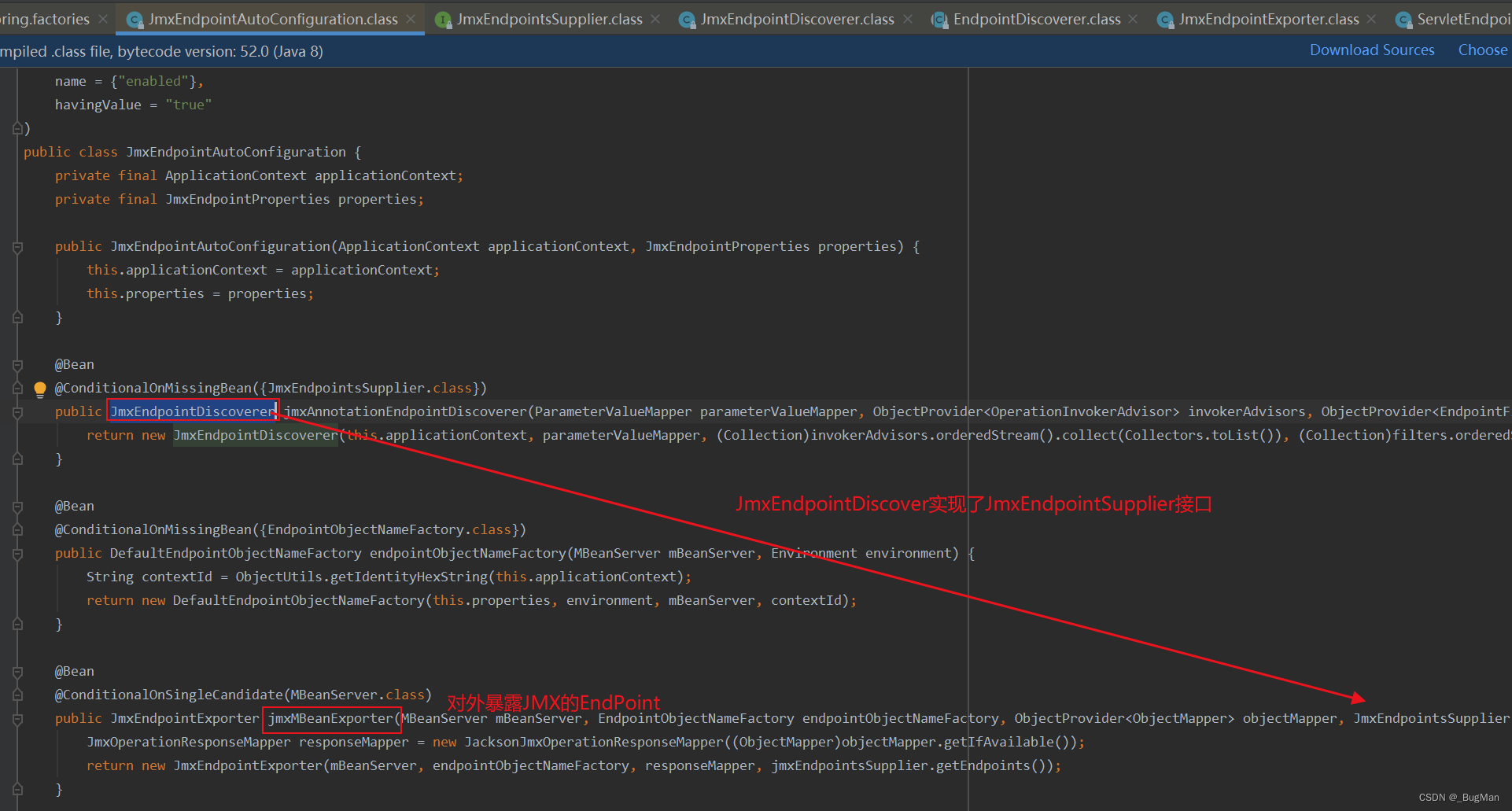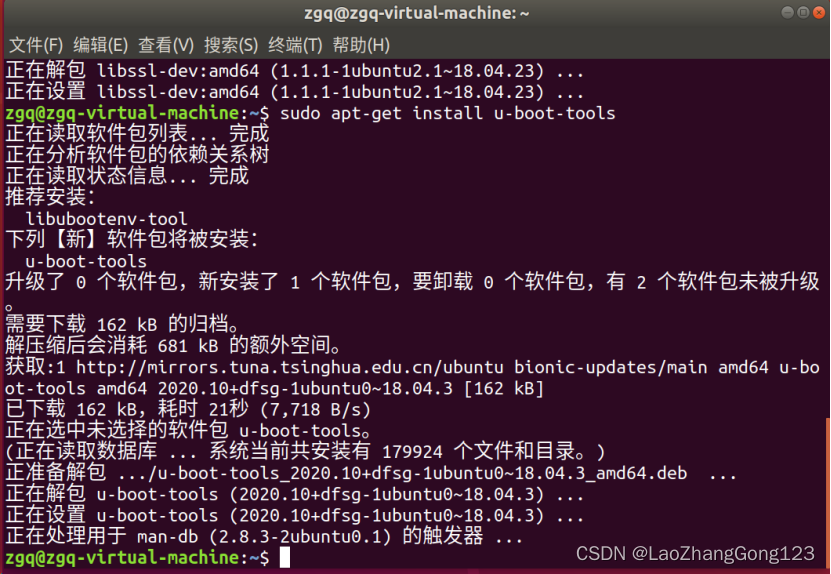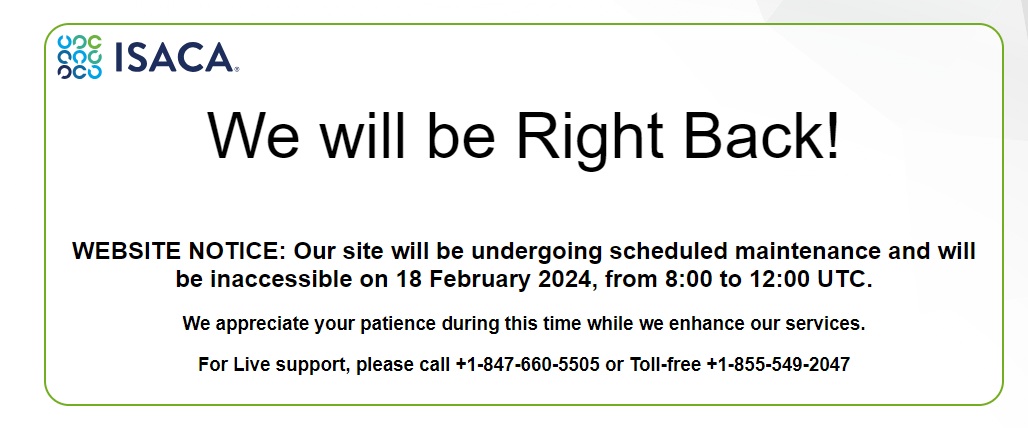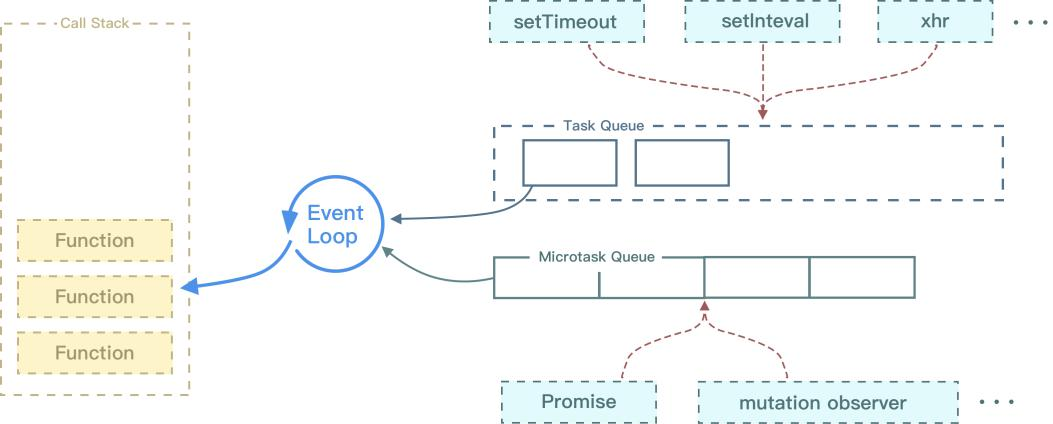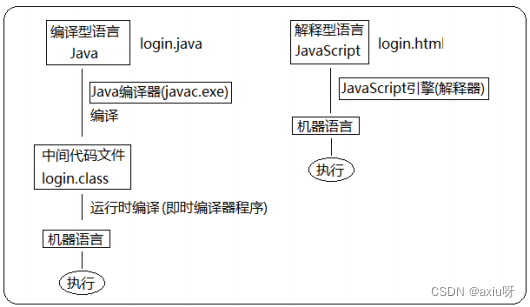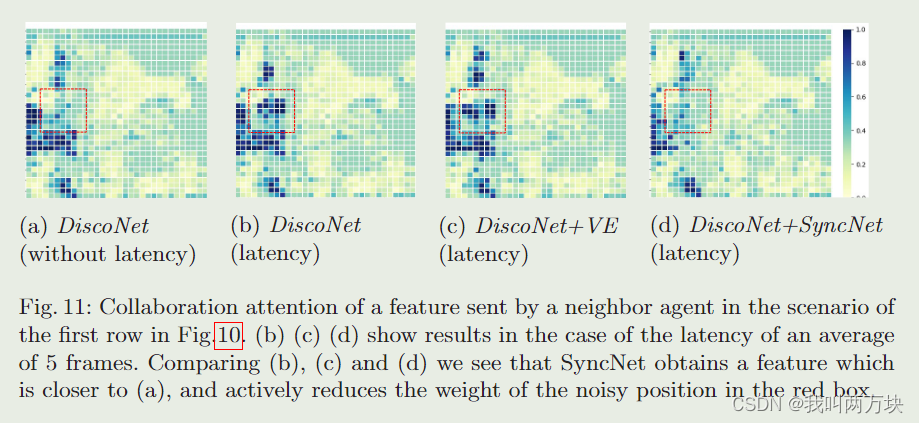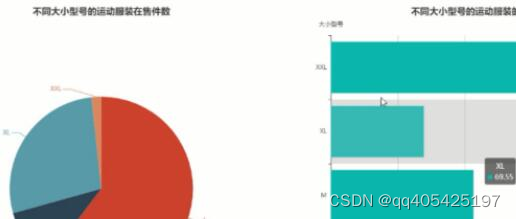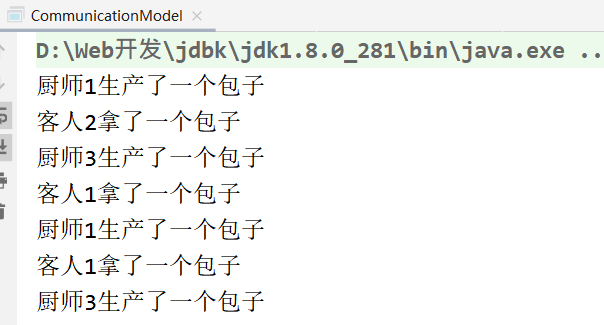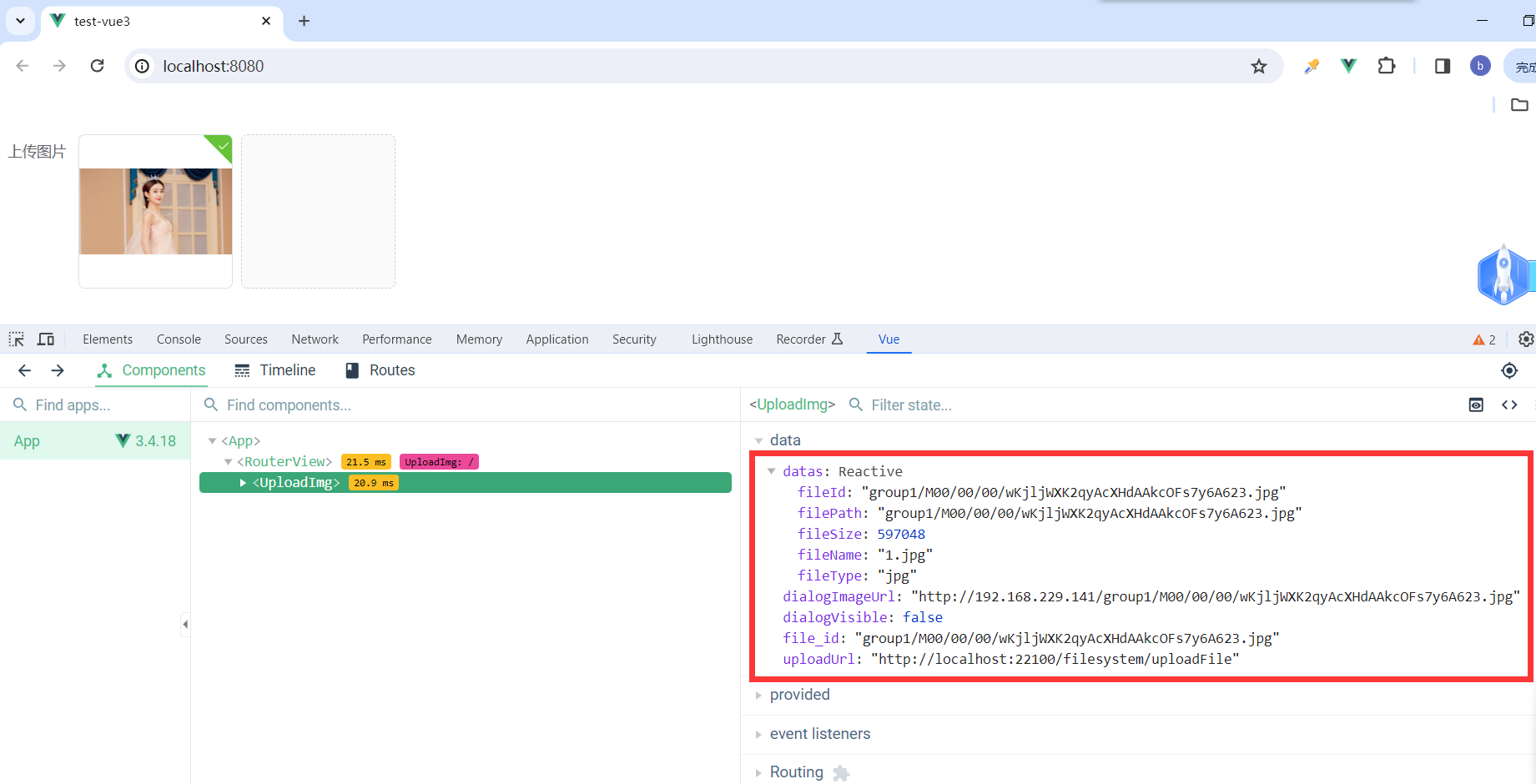AOP基本概念
Spring框架的两大核心:IoC和AOP
AOP:Aspect Oriented Programming(面向切面编程)
AOP是一种思想,是对某一类事情的集中处理
面向切面编程:切面就是指某一类特定的问题,所以AOP可以理解为面向特定方法编程
举例:拦截器是AOP的一种应用
“特定问题”:登录校验
针对特定问题统一处理:登录校验拦截器
Spring对AOP进行了实现,并且提供了一些API,就是Spring AOP
AOP的作用:
AOP开发步骤
举例:往之前的图书管理系统中创建一个切面aspect,打印每个接口的耗时。
引入AOP依赖
在pom.xml文件中添加配置
<dependency><groupId>org.springframework.boot</groupId><artifactId>spring-boot-starter-aop</artifactId>
</dependency>编写AOP程序
打印每个接口的耗时
@Component//交给Spring管理
@Slf4j//打印日志
@Aspect//表明改类为切面
public class TimeAspect {// @Around定义哪些是目标方法@Around("execution(* com.example.SpringBookaliyun.controller.*.*(..))")public Object timeCost(ProceedingJoinPoint joinPoint) throws Throwable {//ProceedingJoinPoint表示作用的目标方法long start=System.currentTimeMillis();//执行目标方法Object result=joinPoint.proceed();long end=System.currentTimeMillis();log.info(joinPoint+"消耗时间:"+(end-start)+"ms");return result;}
}
通过上面的程序, 我们也可以感受到AOP面向切面编程的⼀些优势:
• 代码无侵入: 不修改原始的业务方法, 就可以对原始的业务方法进行功能的增强或者是功能的改变
• 减少了重复代码
• 提高开发效率
• 维护方便
AOP详解
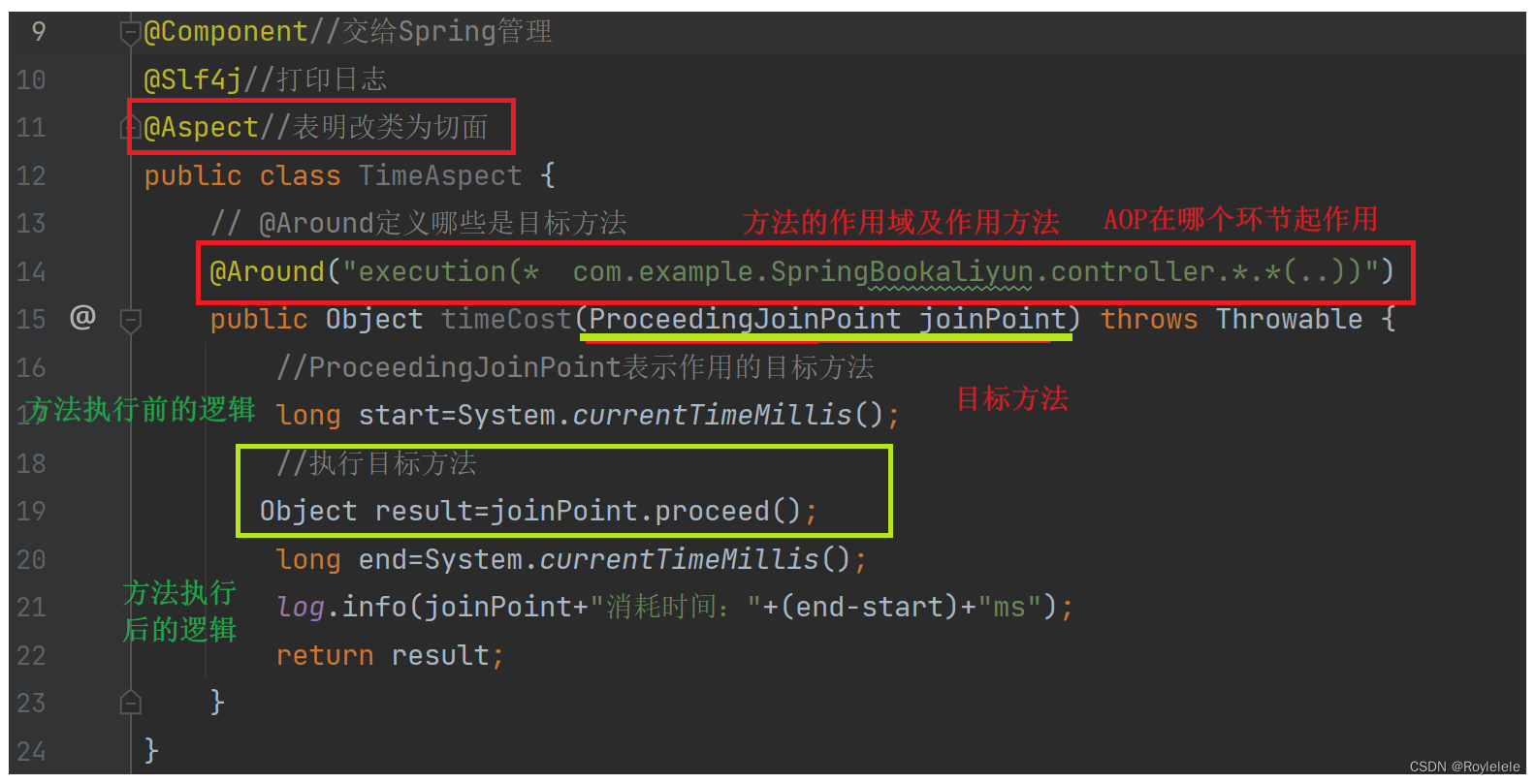
1.切点:切入点 ,一组规则,通过表达式来描述
@Around("execution(* com.example.SpringBookaliyun.controller.*.*(..))")
2.连接点:目标方法就是连接点;切点描述的方法
图书管理系统中controller下的所有方法(add、delete.....)
3.通知:具体的逻辑,要做的处理
4.切面:切点+通知
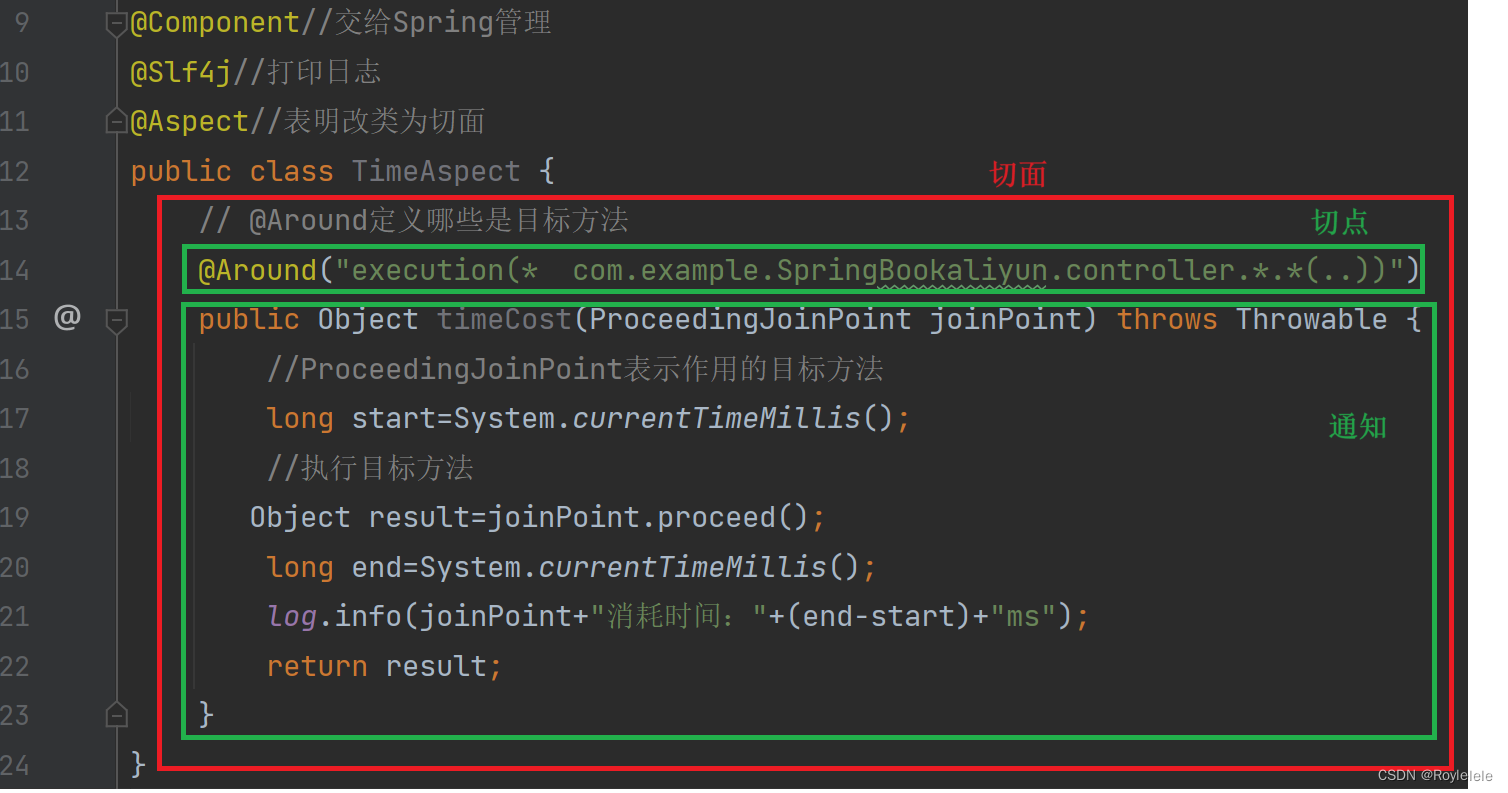
通知(advice)
Spring中AOP的通知类型有以下几种:
• @Around: 环绕通知, 此注解标注的通知方法在目标方法前, 后都被执行
• @Before: 前置通知, 此注解标注的通知方法在目标方法前被执行
• @After: 后置通知, 此注解标注的通知方法在目标方法后被执行, 无论是否有异常都会执行
• @AfterReturning: 返回后通知, 此注解标注的通知方法在目标方法后被执行, 有异常不会执行
• @AfterThrowing: 异常后通知, 此注解标注的通知方法发生异常后执行
简单做一个测试:
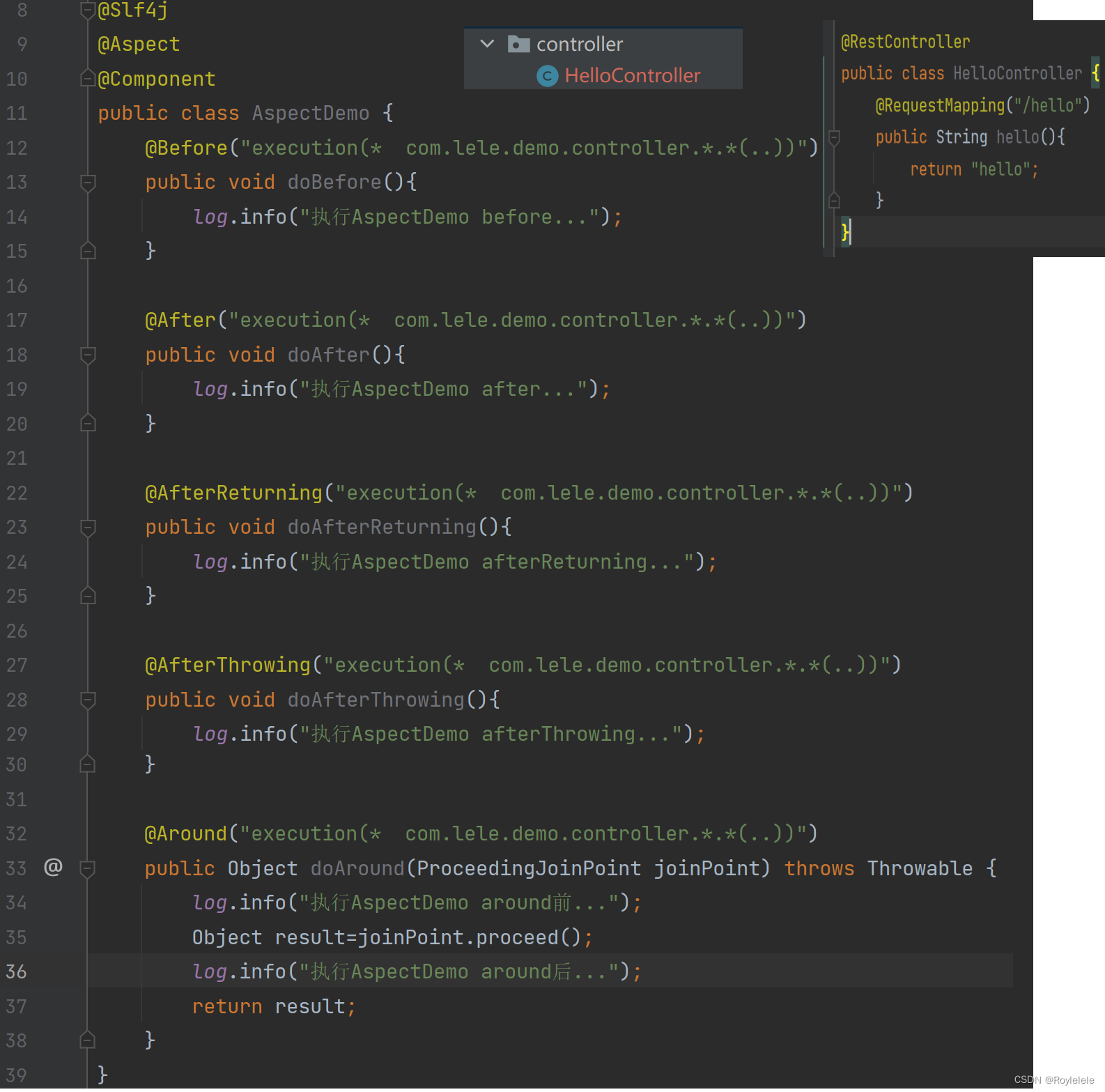
测试结果:

先执行around,再执行before;先执行after,再执行around
当添加一个异常的接口,执行异常接口的时候,观察控制台的顺序:
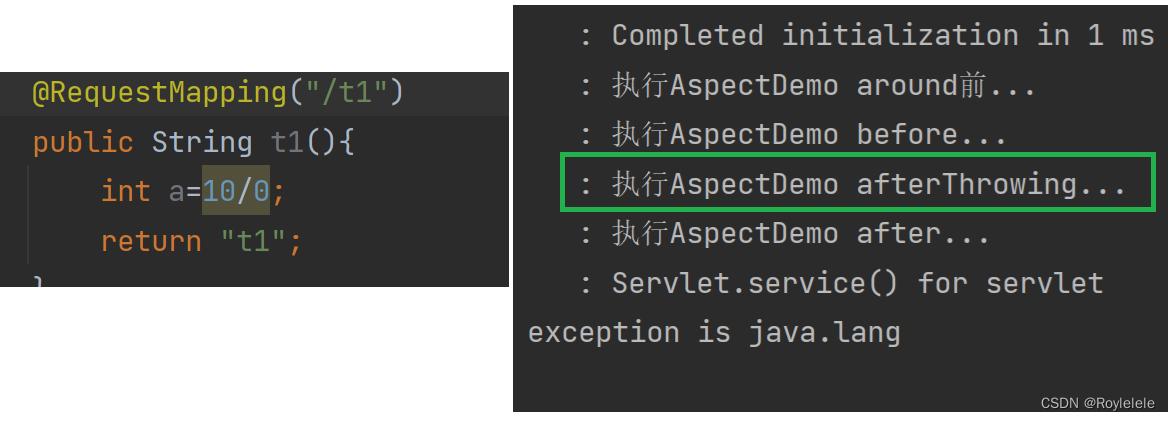

切点
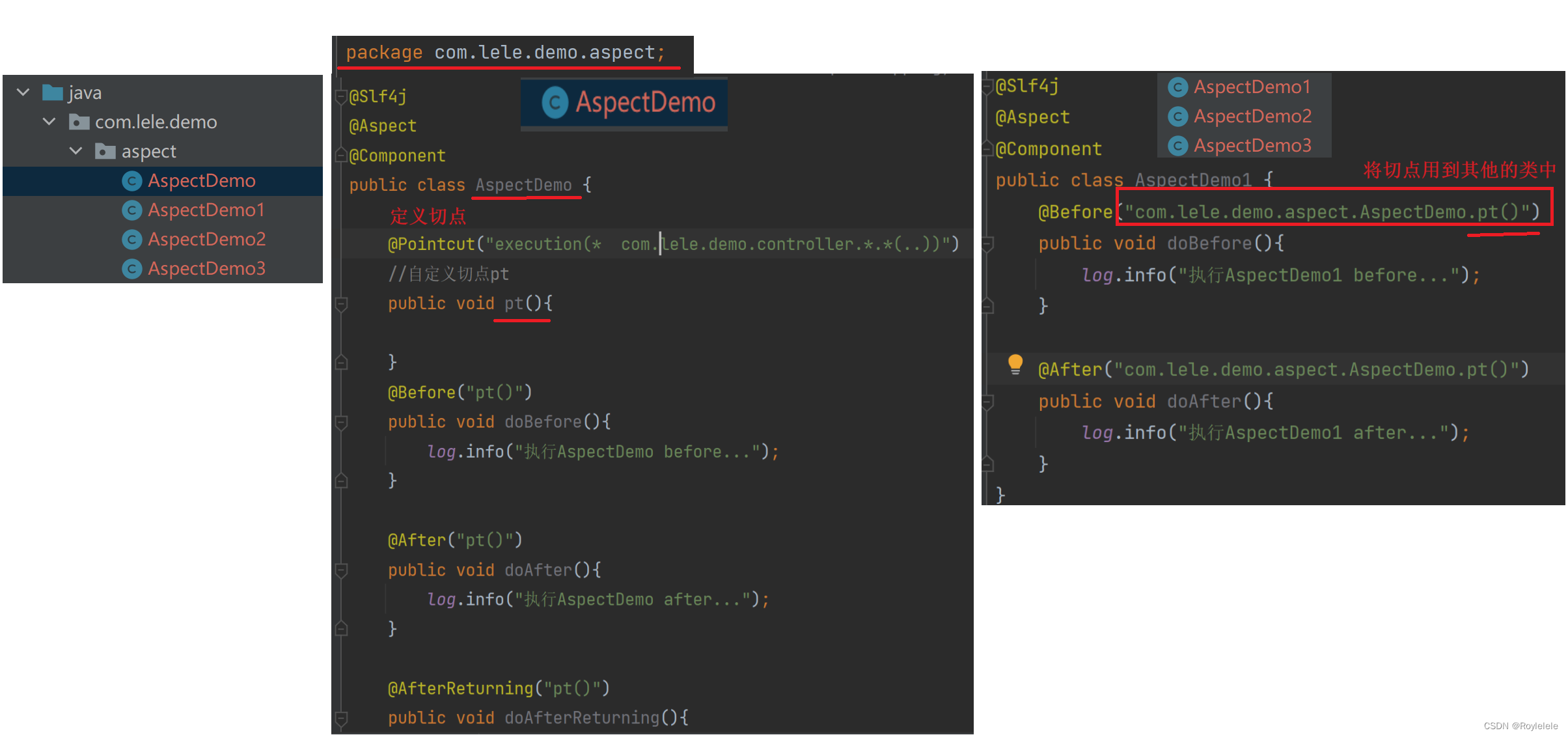
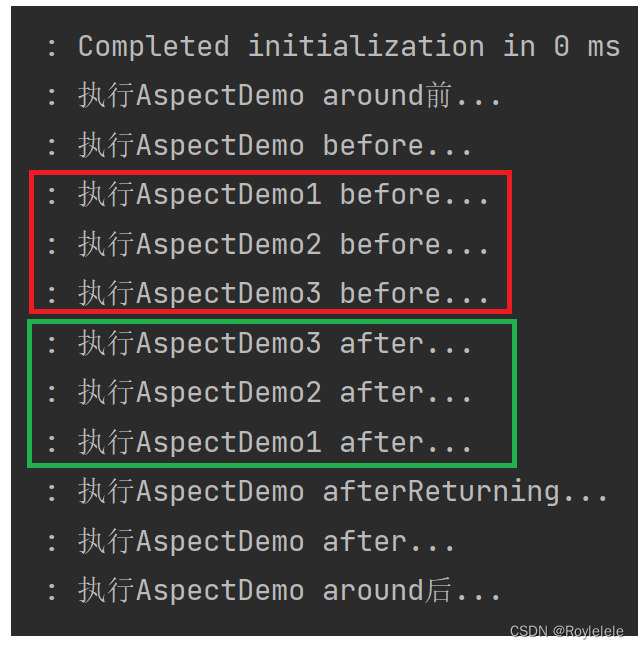
切面优先级(@Order)
当我们在⼀个项目中, 定义了多个切面类时, 并且这些切面类的多个切入点都匹配到了同⼀个目标方法. 当目标方法运行的时候,运行顺序不方便管理。
Spring 给我们提供了一个新的注解, 来控制这些切面通知的执行顺序:@Order

使用@Order时,数字越小,优先级越高
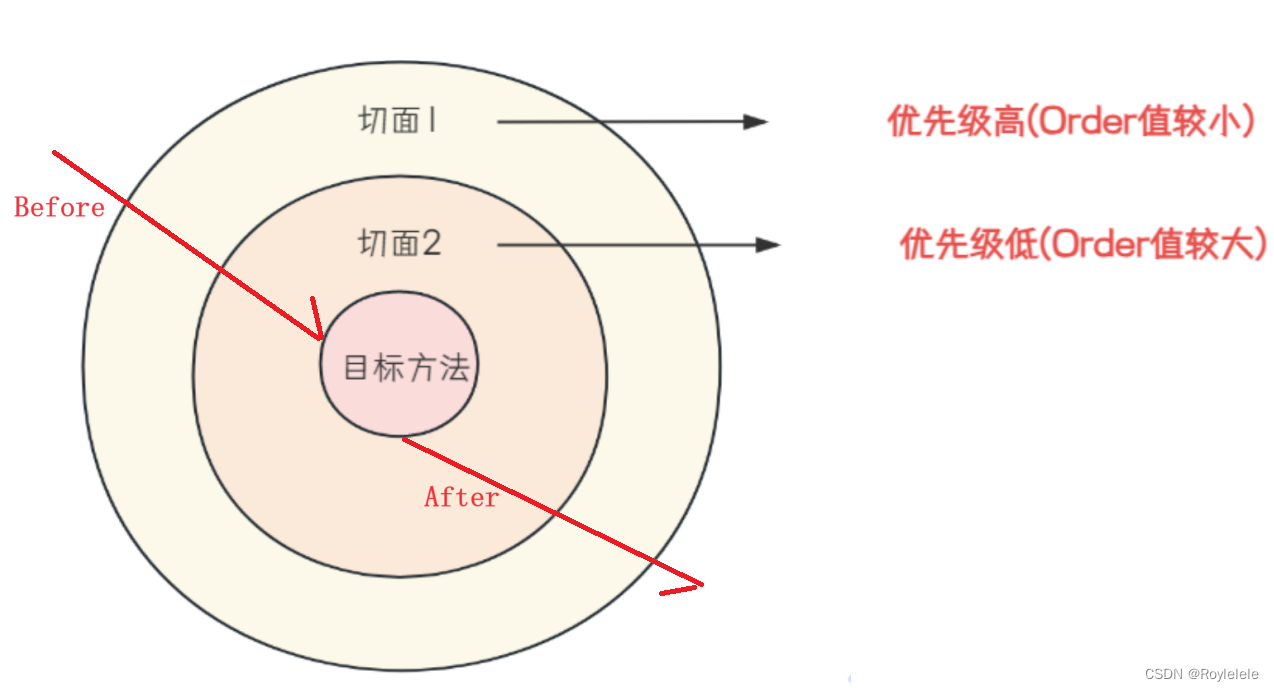
切点表达式
切点表达式常见有两种表达⽅式
1. execution(RR):根据方法的签名来匹配
2. @annotation(RR) :根据注解匹配
execution表达式
execution(<访问修饰符> <返回类型> <包名.类名.⽅法(⽅法参数)> <异常>)
访问修饰符和异常可以省略
//切点表达式⽰例 //TestController 下的 public修饰, 返回类型为String ⽅法名为t1, ⽆参⽅法 execution(public String com.example.demo.controller.TestController.t1())
//省略访问修饰符 execution(String com.example.demo.controller.TestController.t1())
//匹配所有返回类型 execution(* com.example.demo.controller.TestController.t1())
//匹配TestController 下的所有⽆参⽅法 execution(* com.example.demo.controller.TestController.*())
//匹配TestController 下的所有⽅法execution(* com.example.demo.controller.TestController.*(..))
//匹配controller包下所有的类的所有⽅法 execution(* com.example.demo.controller.*.*(..))
//匹配所有包下⾯的TestController execution(* com..TestController.*(..))
//匹配com.example.demo包下, ⼦孙包下的所有类的所有⽅法execution(* com.example.demo..*(..))@annotation注解匹配
execution表达式更适用有规则的, 如果我们要匹配多个无规则的方法时, 例如:TestController中的t1() 和UserController中的u1()这两个方法.
这个时候使用execution这种切点表达式来描述比较麻烦。
此时使用@annotation 来描述这一类的切点
实现步骤:
1. 编写自定义注解
2. 使用@annotation 表达式来描述切点
3. 在连接点的方法上添加自定义注解
1. 编写自定义注解
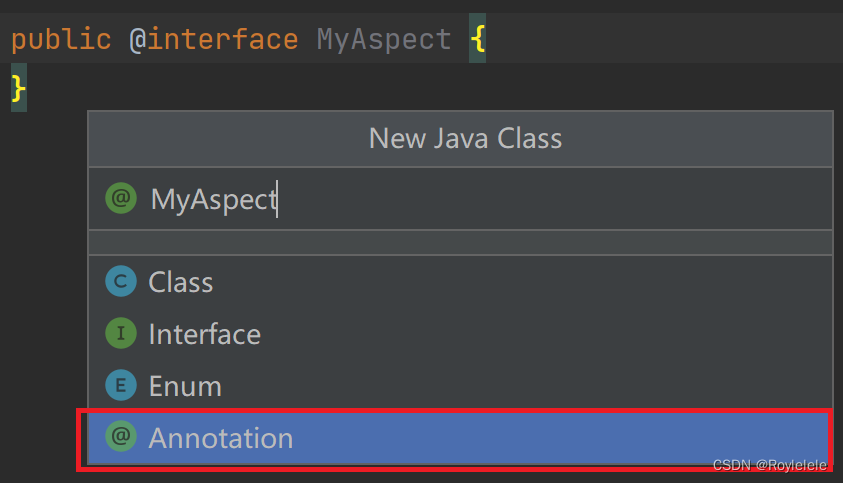

2. 使用@annotation 表达式来描述切点
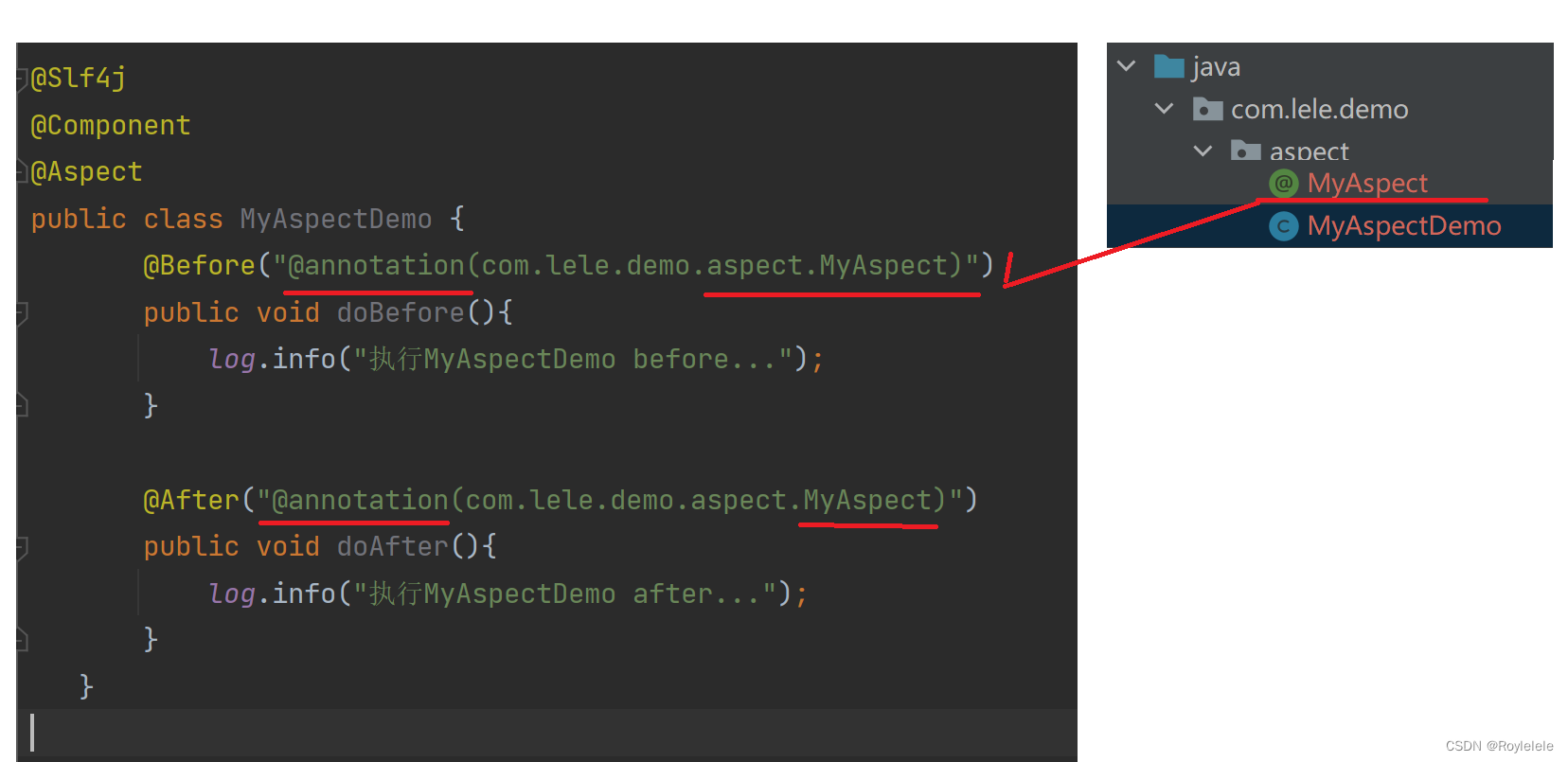
3. 在连接点的方法上添加自定义注解
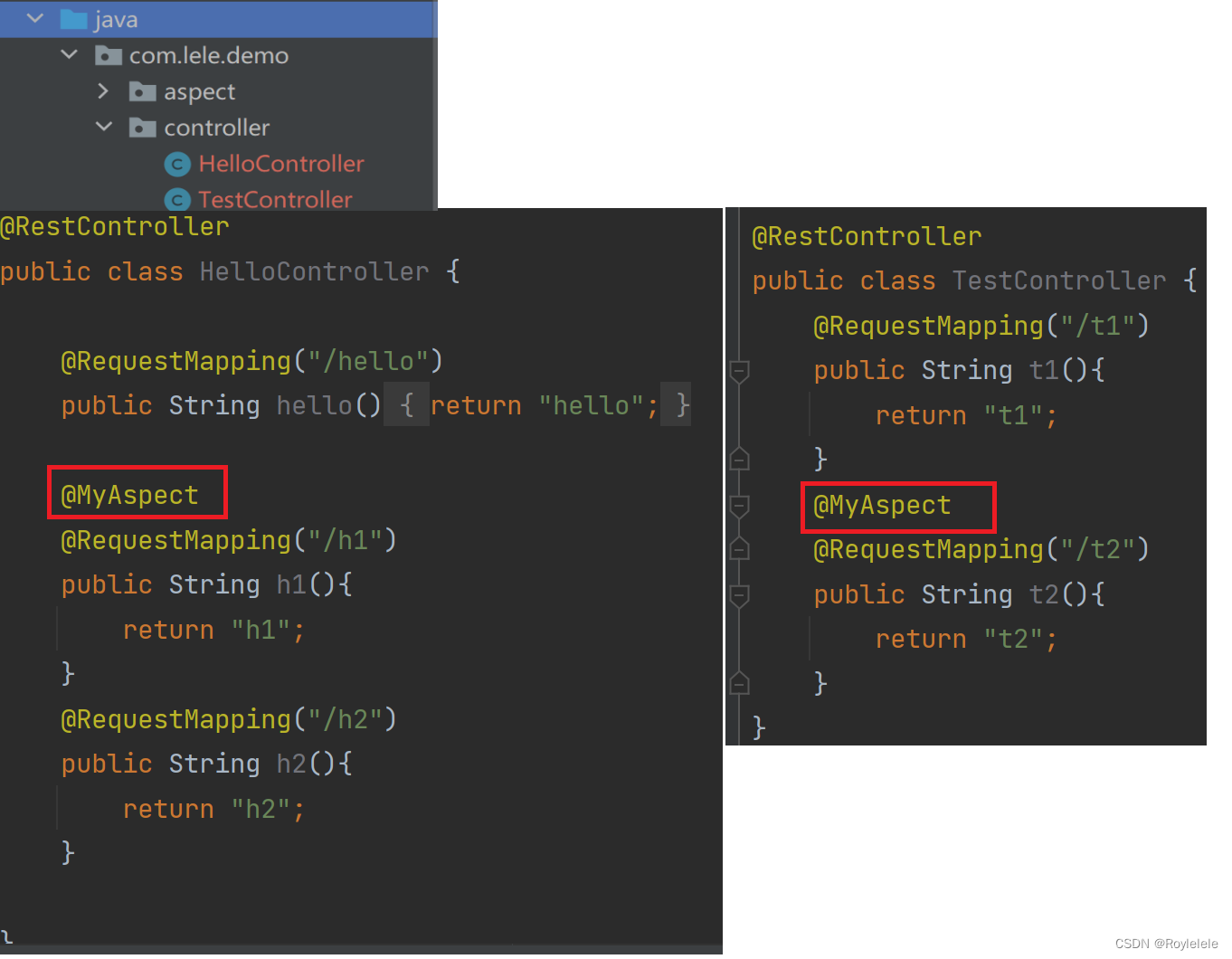
此时只有执行h1和t2时,控制台才会出现对切点的描述
